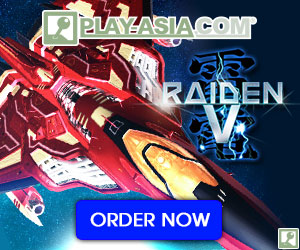Divinity: Dragon Commander is not your standard role-playing game. Part real-time strategy, part trading card game, you take on the role of a Dragon Commander who is a fierce opponent in battle. The game is a combination of combat as well as strategy on the ‘Tactical Overview’ (i.e. world map). There are three phases – strategy, RTS and role-playing (as I like to call them respectively).
The role-playing phase is when you converse with your fellow commanders and access your abilities, skills and units before entering the ‘strategy’ phase. The strategy phase is when you enter the Tactical Overview and plan your attacks and takeovers. The Tactical Overview is also where the trading card aspect comes into play. Before the end of each turn – and after you have planned your course of action – you can use a trading card. These trading cards can give you the advantage during combat by granting you additional units and/or other advantages. Strategy is an important factor in Dragon Commander.
Combat is similar to other real-time strategy games (think Command & Conquer). The core element of combat is to build a strong foundation for your main base and to manufacture as many units and vehicles as possible to overwhelm your opponent.
![]()
The in-game controls are your typical ‘drag and drop’ to select units. The real difference in how Dragon Commander plays is that you cannot build structures anywhere you like. There are predetermined locations on the map where you can build structures for resources and constructing units. These locations must be found and then controlled before your opponent reaches them. Once you gain control over these locations, you can proceed to build and harvest the resources.
Staying in control over these predetermined locations is important since your enemy can capture them. This is where strategy takes precedent. There is more to combat than just moving your units; you can also summon your Dragon Commander at certain times. Once your Dragon Commander has been summoned, you can control him by using the WASD keys in conjunction with the mouse. Being powerful, the Dragon Commander can lay waste to your opponents. The game becomes more of a third-person shooter, but you can still command / move your troops and units.
There are three different Dragon classes with their own skills and talents. Your skills and units can be purchased from the ‘Hub’ while outside of combat. To purchase skills or units, you will need Research Points and gold. Both are acquired by capturing strategical points on the Tactical Overview map. The more battles you win, and locations you takeover, the more resources and money you will have for researching units and purchasing skills.
![]()
Dragon Commander offers both a single-player experience and online multiplayer. The single-player campaign can be rather difficult for a newcomer, but it does help lay the groundwork for you to experience online multiplayer. Online players can be unforgiving and they don’t usually take prisoners (so to speak), so you should be prepared when taking them on. The single-player AI can be just as difficult at times leaving little room for error. Besides, it is recommended that you experience the offline campaign before even attempting multiplayer. The game has a learning curve that requires patients, but once you do, it’s easy from there.
Online multiplayer is a lot fun and well worth your time. Most matches can become heated – and even complicated – almost immediately. Dragon Commander is not the type of game where it takes thirty minutes to amass an army. Experienced players can do this in half the time, making matches not only unpredictable, but rather short if you’re not prepared.
Online multiplayer offers a variety of modes to choose from: Skirmish, Co-Op Campaign, Campaign Ladder and Skirmish Ladder. The multiplayer modes are self-explanatory; they are your traditional campaigns and skirmish matches. Either way, you’re guaranteed to find a mode that fits your style of play.
![]()
The intricate details that were paid to the graphics is simply mind-blowing. If you happen to attack enemy units with fire, you can literally cause entire forests to ignite and burn to the ground. It’s small details like these that really add to the game’s realism. Additionally, the narration is fantastic and helps the story come to life. A non-scripted story makes for a very pleasurable experience.
Dragon Commander allows you to experience the world of Divinity from a different perspective as you amass enormous armies and conquer entire continents. As a game, Dragon Commander is a great prelude to the series while we wait with bated breath for the official role-playing sequel “Original Sin” to surface.
James ‘Daripp3r’ Pittaro
Platform: PC
System Requirements
Minimum:
OS: Windows XP SP3
Processor: Intel Core2 Duo E6600 or equivalent
Memory: 2 GB RAM
Graphics: NVIDIA GeForce 8800 GT (512 MB) or ATI Radeon™ HD 4850
DirectX: 9.0c
Hard Drive: 15 GB HD space
Sound: DirectX9c compliant
Other Requirements: Broadband Internet connection
Developer: Larian Studios
Publisher: Larian Studios
ESRB: N/A
Price: $39.99
| Review Score | |
|---|---|
| Graphics | |
| Incredibly beautiful 3D graphics that do the game justice. | |
| Sound | |
| High quality explosions and a very impressive soundtrack. | |
| Gameplay | |
| Divinity:Dragon Commander shines the most as an online multiplayer game. | |
| Overall | |
|---|---|
